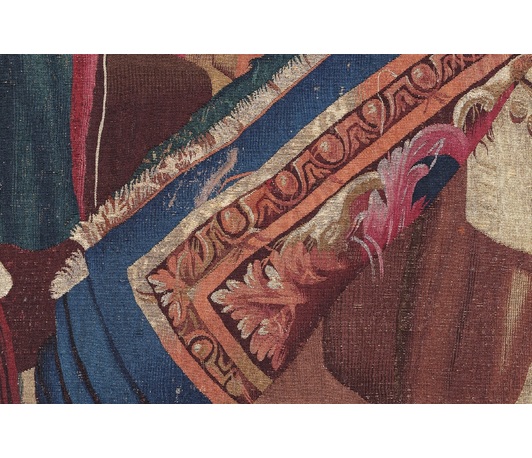The Fabrication of the King: Charles Le Brun Reflecting on the Textile Medium
Semester Opening Lecture
- Public event without registration
- Date: Oct 2, 2024
- Time: 06:30 PM - 08:00 PM (Local Time Germany)
- Speaker: Tristan Weddigen
- Location: Villino Stroganoff, Via Gregoriana 22, 00187 Rome and online
- Contact: freiberg@biblhertz.it

This lecture focuses on Charles Le Brun’s famed Histoire du roi tapestry set, produced between 1665 and 1681 at the Paris Manufactory of the Gobelins, that reflects on the medium’s technical grammar, material expressive language, visual power, position within the history of art, and specific identity compared to other applied and fine arts. In this case, as illustrated by itself, the medium’s specificity and value is embedded and contributing to Louis XIV’s cultural politics and art economy. More precisely, textiles’ specific ability to create a non-Euclidean social space, to suggest transparency and mirroring through their coarse imitation of other mediums, and to fabricate the King and the State while being their very product at the same time, will be addressed in the paper. The reference to prototypical works and inventions, namely Raphael’s Acts of the Apostles and his painterly experiments in transmediality, invites to reconsider the notion of both copying and competing across historical time and political space, and conceiving the Baroque as a Neo-Renaissance. One piece, the King’s Visit to the Gobelins in 1667, performs and materializes the theory of the making of the goblins themselves as a state form of art and as an embodied metaphor of the art of statecraft. The analysis of the set also gives the opportunity to examine how textile art theory can emancipate from the paragone and disegno paradigms, their Vasarian histories, and the triumvirate of painting–sculpture–architecture, as to undermine the nascent academic nomenclature of the arts. This finally invites to reflect on what is meant by theory in the early modern age.
Please follow the lecture also online on our VIMEO CHANNEL: https://vimeo.com/event/4558318
Tristan Weddigen is director at the Bibliotheca Hertziana – Max Planck Institute for Art History and professor at the University of Zurich. His department focuses on contemporary Italian art, its global entanglements, materiality and mediality, the history of art history and digital visual studies.